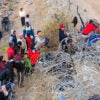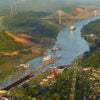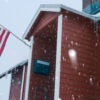A total eclipse crossed the country this week in a display of natural wonder. Rather than seize the opportunity for an engaging science lesson, hundreds of school districts with several hundred thousand students decided to close for the day, many citing safety concerns that students might accidentally look at the eclipse without proper eye protection.
Even worse than failing to teach students about science, the decision to close schools for the eclipse teaches students to have irrational fears about their safety. If we want to understand why young people are experiencing alarming levels of anxiety and having difficulty developing into capable adults, all we have to do is look at examples like the excess cautiousness exhibited by schools regarding the eclipse.
The Daily Signal depends on the support of readers like you. Donate now
To put in perspective how irrational it is for schools to close during the eclipse out of safety concerns, let’s review how incredibly unlikely it is that the eclipse would harm anyone. It is true that people should wear protective eyeglasses when looking directly at the sun during an eclipse. But the instances in which people stare at the sun without protection and cause permanent and serious damage to their eyes are so rare that they almost round down to zero.
In 1999, a total solar eclipse crossed the southern part of England, a country with 99 million people. An article in the British Journal of Medicine reports that a total of 14 people experienced any eye injuries from that event, and those were mostly minor and temporary.
In fact, an earlier study of an eclipse in Turkey found that the handful of injuries were so ephemeral that only “10% of those with damage had permanent visual loss to the extent that they were not able to read a car number [license] plate at 25 yards.”
The only serious injury documented from the England eclipse occurred after someone “looked at the sun for around 20 minutes without protection.”
If schools were unable to distribute the protective eyewear that was widely available and avoid having students stare at the sun without that protection for 20 minutes, they would be so lacking in behavioral control that they should be permanently closed, rather than just close for that day.
It’s worth noting that students could also damage their eyes if they stab them repeatedly with pencils. Presumably, schools have sufficient behavioral control to avoid closing over concerns about pencil-induced blindness.
Despite the fact that the threat posed by the eclipse to student health is about as remote as that posed by pencils, hundreds of school districts across the country decided to close for safety reasons.
In Arkansas alone, 104 school districts with 163,954 students, or about 35% of all students in the state, closed for the eclipse. In the state of New York, more than 200 school districts closed. In Ohio, the number of school districts that closed also exceeded 100, including schools in Cleveland, the state’s second-most populous city. Another 100 school districts closed in Texas, Indiana, and Pennsylvania. Even in Louisiana, which was not in the path of the total eclipse, there were still school districts that closed, “with many citing safety concerns.”
People sometimes say, “You can’t be too careful,” but the truth is you can be. Excessive cautiousness promotes a fragility among young people that hinders their ability to develop as capable adults. As both Jonathan Haidt and Abigail Shrier have documented in their recent books, crippling fear of the broader world is making it less likely that young people physically gather and socialize, driving them into dangerously isolated and distorted virtual lives.
Excessive anxiety is making it less likely for young people to get driver’s licenses, less likely to date, and ultimately less likely to form new families with their own children.
We can’t lay blame for all of this on the decision of more than 500 school districts this week to close for the eclipse. But we can see these closures as an indication of how public schools are failing our children by modeling excessive and irrational concerns about safety. It’s this same excessive and irrational caution that led so many schools to close for long stretches of the COVID-19 pandemic, with disastrous consequences for both academic and social development.
During both the eclipse and COVID-19, public schools made decisions for the convenience of the adults who work in them without concern for their students or families. Handing out protective eyewear, walking outside to look at the eclipse, and having to remind students to be sure to use the glasses can seem like a hassle to unmotivated teachers and administrators. They similarly hate going on field trips to visit historical sites or cultural institutions. As they see it, things could only go wrong if they leave the safe confines of the classroom.
But most families do not want their children raised by schools surrounded by virtual bubble wrap. They want their children to develop into capable and independent adults.
If we want to prevent the next generation from becoming paralyzed with anxiety and irrational concerns for safety, we need to shift power from excessively cautious and unmotivated public schools to parents. When parents can choose their schools, they will find those that balance safety and exploration in a way that suits the needs of their own children and not those of the adults who work in schools.































